#macarthur radio
Text

"No civilization has ever lived with as many lies and liars as the one in which we live today.
There was a time, for most of human history, where you only knew the lies that somebody told you.
And then somebody invented a printing press, and then you could know the lies that somebody else told.
Then somebody invented a telephone, and you could hear the lies from people who weren’t anywhere near you.
And then came the wonderful Internet; and the Internet has created an explosion of lies that is beyond human comprehension.
No generation of people has been exposed to more lies and more liars than this one, and that comes at your fallen flesh. You still have that weakness in you, and the massive amount of lies find you.
You don’t find them; they find you. If you have a phone, they find you; they find you constantly. If you turn on the radio, they find you. If you turn on the television, they find you.
Everyone lies sometimes, and most people lie most of the time. People lie about everything. They lie about things you wouldn’t even think they would need to lie about; and they lie about things that are patently, obviously untrue.
I keep thinking the big lie is that you can be a man and turn yourself into a woman. What kind of insanity is that? You’re on the level of somebody who thinks he’s a potato chip if you believe that.
You can be told anything if you have that kind of incredulity."
— John MacArthur
73 notes
·
View notes
Text

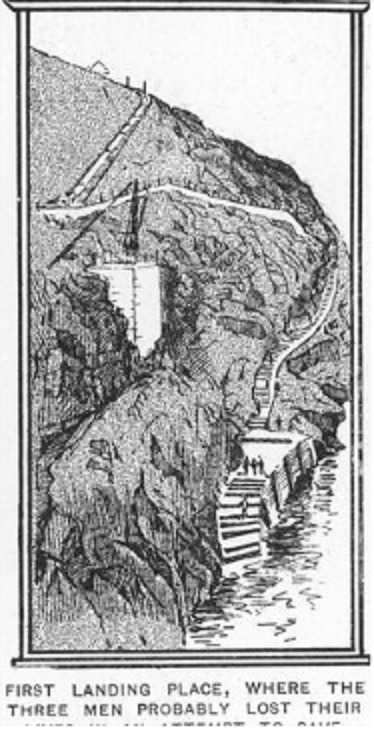
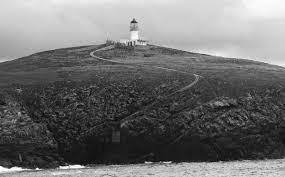
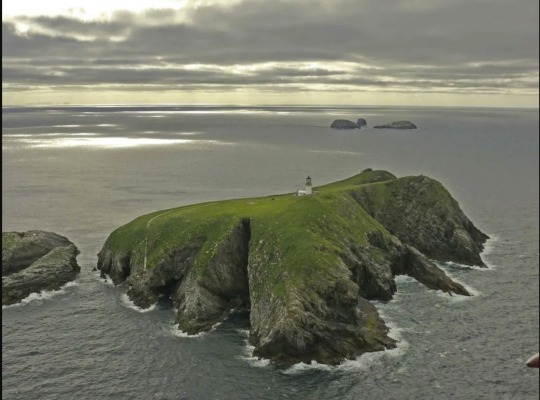

15th of December 1900 is the most likely date that the three lighthouse keepers of the year old Flannan Isles Lighthouse disappeared.
The building of Flannan Lighthouse was plagued with accidents, several workers died or vanished while working on the lighthouse, it took about 4 years to complete. Legend has it the island was said to be inhabited by mysterious “little people.” Large birds also were said to live there, too, and have contact with these little people.
Na h-Eileanan Flannach is the Scottish Gaelic name of the small group of islands known in English as the Flannan Isles. They are a bird sanctuary and at times a place of beauty. At others these remote islands bear the brunt of severe Atlantic storms, which whip the seas into frenzy and force even the hardy gulls to stay sheltered in the cliff face crags. For many years they have remained uninhabited, the last residents of any length being the lighthouse keepers, who between 1899 and its automation in 1971, kept the light burning on the highest point of the island group, Eilean Mòr.
On the island of Eilean Mòr is the ruin of an old chapel dedicated to St Flannan. However, over many centuries for many of the Gaelic Hebridean community the islands have been viewed as a place of superstition and bad luck. A view that was reinforced by the tragic and mysterious events that befell the lighthouse keepers on Eilean Mòr in mid-December 1900.
It is the fate of the lighthouse keepers, James Ducat, Thomas Marshall, and Donald McArthur, in 1900; just over one year after the island’s lighthouse came into operation that is the cause of much mystery and speculation. For all three keepers disappeared without trace. It was on 15th December 1900 that the ship Archtor which was sailing for Scotland from Philadelphia had reported that as they passed the islands the lighthouse was not in operation. In those days there was no radio communication between the keepers on Eilean Mòr and the shore station of Breasclete on Lewis.
When the lighthouse tender arrived on 26th December 1900 having been delayed due to adverse conditions.
There was no welcome from the lighthouse keepers, no flag on the flagstaff and no provision boxes left for them as was customary.
The relief keeper Joseph Moore was sent to investigate further and found the main door and gate to the compound closed, the beds unmade and the clock stopped. They also found a set of oilskins, suggesting one of the keepers to have left without them – unusual and worrying considering the poor weather conditions that had been recorded in the log.
The island was scoured for clues, or any sign of the keepers, but nothing was found. The west landing had received considerable damage, with turf ripped up and a box of supplies destroyed, with its contents strewn about. The keepers log proved that this damage had occurred before the disappearance.
The log leading up to the men’s disappearance included some strange entries, with descriptions of an awful storm, high winds, and low spirits amongst the keepers. There were however no reports of storms in the area in the days leading up to the disappearance, meaning that the poor weather conditions recorded in the log were either made up, or localised.
To this day no one knows what took place in the lighthouse that night, but many theories have developed over the years.
The more far-fetched of these theories suggest they had been carried away by a giant seabird, had been abducted by spies or had simply escaped to start new lives. The perhaps more plausible theories suggest that the keepers had been swept away when trying to secure a box in a crevice above sea level. Other theories suggest the psychology of the lighthouse keepers played a part. MacArthur had a reputation for brawling and was known to be violent. It is suggested by some that a fight broke out on the cliff edge, causing the men to fall to their deaths.
It was only after 1912, when English poet Wilfrid Wilson Gibson published his epic, Flannan Isle, that the story began to assume such an air of mystery, speculation, even intrigue. In general for lighthouse keepers themselves, there is no mystery and never has been, my uncle worked for the Lighthouse Board, and he says it was a freak wave that swept the men to their deaths, this is the assumption of many who worked the Islands around Scotland, but in truth we will never know what happened.
Flannan Lighthouse Memorial at Breasclete, Isle of Lewis , as seen in the pics, was unveiled in 2017.
32 notes
·
View notes
Text


On 6 August 1945, during World War II (1939-45), an American B-29 bomber dropped the world’s first deployed atomic bomb over the Japanese city of Hiroshima.
The explosion immediately killed an estimated 80,000 people; tens of thousands more would later die of radiation exposure.
Three days later, a second B-29 dropped another A-bomb on Nagasaki, killing an estimated 40,000 people.
Japan’s Emperor Hirohito announced his country’s unconditional surrender in World War II in a radio address on August 15, citing the devastating power of “a new and most cruel bomb.”
The Manhattan Project
Even before the outbreak of war in 1939, a group of American scientists — many of them refugees from fascist regimes in Europe — became concerned with nuclear weapons research being conducted in Nazi Germany.
In 1940, the U.S. government began funding its own atomic weapons development program, which came under the joint responsibility of the Office of Scientific Research and Development and the War Department after the U.S. entry into World War II.
The U.S. Army Corps of Engineers was tasked with spearheading the construction of the vast facilities necessary for the top-secret program, codenamed “The Manhattan Project” (for the engineering corps’ Manhattan district).

Over the next several years, the program’s scientists worked on producing the key materials for nuclear fission — uranium-235 and plutonium (Pu-239).
They sent them to Los Alamos, New Mexico, where a team led by J. Robert Oppenheimer worked to turn these materials into a workable atomic bomb.
Early on the morning of 16 July 1945, the Manhattan Project held its first successful test of an atomic device — a plutonium bomb — at the Trinity test site at Alamogordo, New Mexico.
No Surrender for the Japanese
By the time of the Trinity test, the Allied powers had already defeated Germany in Europe.
Japan, however, vowed to fight to the bitter end in the Pacific, despite clear indications (as early as 1944) that they had little chance of winning.
In fact, between mid-April 1945 (when President Harry Truman took office) and mid-July, Japanese forces inflicted Allied casualties totaling nearly half those suffered in three full years of war in the Pacific, proving that Japan had become even more deadly when faced with defeat.
In late July, Japan’s militarist government rejected the Allied demand for surrender put forth in the Potsdam Declaration, which threatened the Japanese with “prompt and utter destruction” if they refused.

General Douglas MacArthur and other top military commanders favored continuing the conventional bombing of Japan already in effect and following up with a massive invasion, codenamed “Operation Downfall.”
They advised Truman that such an invasion would result in U.S. casualties of up to 1 million.
In order to avoid such a high casualty rate, Truman decided – over the moral reservations of Secretary of War Henry Stimson, General Dwight Eisenhower and a number of the Manhattan Project scientists – to use the atomic bomb in the hopes of bringing the war to a quick end.
Proponents of the A-bomb — such as James Byrnes, Truman’s secretary of state — believed that its devastating power would not only end the war but also put the U.S. in a dominant position to determine the course of the postwar world.
'Little Boy' and 'Fat Man' Are Dropped

Hiroshima, a manufacturing center of some 350,000 people located about 500 miles from Tokyo, was selected as the first target.
After arriving at the U.S. base on the Pacific island of Tinian, the more than 9,000-pound uranium-235 bomb was loaded aboard a modified B-29 bomber christened Enola Gay (after the mother of its pilot, Colonel Paul Tibbets).
The plane dropped the bomb — known as “Little Boy” — by parachute at 8:15 in the morning.
It exploded 2,000 feet above Hiroshima in a blast equal to 12-15,000 tons of TNT, destroying five square miles of the city.
Hiroshima’s devastation failed to elicit immediate Japanese surrender, however, and on August 9, Major Charles Sweeney flew another B-29 bomber, Bockscar, from Tinian.
Thick clouds over the primary target, the city of Kokura, drove Sweeney to a secondary target, Nagasaki, where the plutonium bomb “Fat Man” was dropped at 11:02 that morning.

More powerful than the one used at Hiroshima, the bomb weighed nearly 10,000 pounds and was built to produce a 22-kiloton blast.
The topography of Nagasaki, which was nestled in narrow valleys between mountains, reduced the bomb’s effect, limiting the destruction to 2.6 square miles.
Aftermath of the Bombing

At noon on 15 August 1945 (Japanese time), Emperor Hirohito announced his country’s surrender in a radio broadcast.
The news spread quickly.
“Victory in Japan” or “V-J Day” celebrations broke out across the United States and other Allied nations.
The formal surrender agreement was signed on September 2, aboard the U.S. battleship Missouri, anchored in Tokyo Bay.
Because of the extent of the devastation and chaos — including the fact that much of the two cities' infrastructure was wiped out — exact death tolls from the bombing of Hiroshima and Nagasaki remain unknown.
However, it's estimated roughly 70,000 to 135,000 people died in Hiroshima and 60,000 to 80,000 people died in Nagasaki, both from acute exposure to the blasts and from long-term side effects of radiation.



#Bombing of Hiroshima and Nagasaki (1945)#6 August 1945#atomic bomb#Hiroshima#Nagasaki#B-29 bomber#A-bomb#U.S. Army Corps of Engineers#The Manhattan Project#nuclear weapons research#Office of Scientific Research and Development#War Department#World War II#WWII#uranium-235#plutonium (Pu-239)#nuclear fission#plutonium bomb#J. Robert Oppenheimer#Oppenheimer#Trinity test#Potsdam Declaration#General Douglas MacArthur#Operation Downfall#Henry Stimson#General Dwight Eisenhower#Enola Gay#Colonel Paul Tibbets#Bockscar#V-J Day
32 notes
·
View notes
Text

Today We Honor Donna Summer
LaDonna Adrian Gaines better known as Donna Summer, was a singer/songwriter who gained prominence during the disco era of the 1970s, and became known as the “Queen of Disco.”
A five-time Grammy Award winner, Summer was the first artist to have three consecutive double albums reach number one on the U.S. Billboard chart.
Summer first rose to fame the mid-’70s, thanks to “Love to Love You Baby.” The song, with Summer’s whispered vocals and orgasmic groans helped define the mid-‘70s disco trend and hit No. 2 in 1976. Summer followed the song with such hits as “I Feel Love,” “Last Dance” and a disco-fied version of the Richard Harris hit “MacArthur Park,” which outdid Harris’ version by hitting No. 1 on Billboard’s Hot 100 singles chart. It was Summer’s first of four chart-toppers.
But with her 1979 album “Bad Girls,” Summer broke out of the disco mold as the genre, which had become renewed by the success of the “Saturday Night Fever” soundtrack, was feeling a backlash. “Bad Girls” demonstrated Summer’s vocal and stylistic range and produced two No. 1 hits, “Hot Stuff” and “Bad Girls,” as well as a Top 10 ballad, “Dim All the Lights.”
And, in 1983’s “She Works Hard for the Money,” became a big radio hit.
Recording Academy President Neil Portnow said. “Her talent was a true gift to the music industry.”
CARTER™️ Magazine carter-mag.com #wherehistoryandhiphopmeet #historyandhiphop365 #cartermagazine #carter #staywoke #donnasummer #blackhistorymonth #blackhistory #disco #history
#carter magazine#carter#historyandhiphop365#wherehistoryandhiphopmeet#history#cartermagazine#today in history#staywoke#blackhistory#blackhistorymonth
39 notes
·
View notes
Photo

The immense talent of the American novelist Cormac McCarthy, who has died aged 89, was for three decades a secret that circulated from hand to hand between a small number of readers, but among them were some influential champions of his work.
Gordon Lish, senior editor at the New York publishers Alfred A Knopf, gave a copy of McCarthy’s Blood Meridian (1985) to the critic Harold Bloom. Bloom loved it, declaring it a great book, right up there with William Faulkner and Toni Morrison. There are pages of prose in his work, remarked George Steiner, “that may be at the moment the most electric, the most violent, the most inventive prose being written”. Saul Bellow bullied and cajoled the prize committee of the MacArthur Foundation in 1981 to acknowledge McCarthy’s remarkable talent.
McCarthy seemed to come from nowhere and for most of his career wrote in the hermit-like obscurity of a JD Salinger or Thomas Pynchon. Refusing all attempts to publicise his work, McCarthy politely declined to be interviewed, never signed copies of his own books, attended no literary conferences, did not teach, and was more interested in science and cosmology than fiction. He was an American original.
Working at first in the southern gothic mode, he remade himself as a southwestern writer after settling in Texas in 1976. He carried the influence of Faulkner, Herman Melville (Moby Dick was reportedly his favourite novel) and Ernest Hemingway along with him, and remained true to the literary values that those richly complex writers had made their own. McCarthy had no time for Marcel Proust or Henry James; he had no interest in the psychological intricacies of motivation, sensibility or modernist thinking about consciousness. His novels, early and late, were grim, violent tales of life stripped down to the raw fundamentals of existence in a hostile world.
Acclaim and a mass readership came late in his career. Until the runaway success of All the Pretty Horses in 1992 (his first New York Times bestseller), McCarthy had sold fewer than 5,000 copies of the hardback edition of any of his novels. By 2006, Blood Meridian, a blood-dripping tale of scalp-hunting and massacres in northern Mexico in the 1840s, was placed at No 3 in a Time magazine list of the 25 greatest American novels. McCarthy seemed the real deal to readers such as Bloom, Lish and Bellow. He reached an even wider audience via film adaptations of books including No Country for Old Men (2005) and the Pulitzer prize-winner The Road (2006). Not since Faulkner had an American author been so extravagantly talented and, by choice, so distant from the literary culture.
McCarthy was born in Providence, Rhode Island, the eldest son and third of six children of Gladys (nee McGrail) and Charles McCarthy. The family moved to Knoxville, Tennessee, in 1937 when his father, a Yale law school graduate, was appointed legal counsel for the Tennessee Valley Authority. Growing up in a large Roman Catholic family in the fiercely Protestant environment of Tennessee, McCarthy was sent to exclusively Catholic schools in Knoxville. Neither the family’s religion, nor their comfortable upper-middle-class life (maids, a large family house), was much to his liking. He did not want to be respectable, and this was not popular in the McCarthy household.
McCarthy attended the University of Tennessee in 1951-52, studying physics and engineering, but dropped out. He had no career ambitions, hated “progress” and rejected most of the expectations that shaped the lives of his siblings and fellow students. He had been named after his father, and the decision legally to change his name from Charles to the Gaelic Cormac suggests some of the family tensions that shaped McCarthy’s relations to his family.
In 1953 McCarthy enlisted in the US air force, and was sent to Alaska, where he had much time to catch up on his reading. He also hosted a programme on a local radio station. After his military service ended in 1956, McCarthy re-enrolled at the University of Tennessee where, as “CJ McCarthy, Jr”, he published two short stories in a campus literary magazine. They attracted some attention, and he received the university’s Ingram-Merrill award for creative writing in 1959.
He promptly left the university without taking a degree, and went to Chicago, where he worked in an auto-parts warehouse. In 1961 he married Lee Holleman, a fellow student from the University of Tennessee. They had a son, Cullen, moved back south to Asheville, North Carolina, and were divorced soon after. When asked years later about whether he paid alimony, he responded: “With what?” He was, for the next 25 years, poor, rootless and happy.
In Chicago, Asheville, and then in New Orleans, he worked on the manuscript of his first novel, The Orchard Keeper. Knowing little of the literary scene, and less of the publishing industry, he sent the novel unsolicited to Random House, where it was plucked from the slush pile of doubtful self-submitted manuscripts and reached the desk of Albert R Erskine, vice-president and editorial director. Erskine was a legendary figure in the world of literary publishing, but even with his support, The Orchard Keeper (1965) – a Faulkneresque tale set in rural Tennessee in the inter-war years, portraying the relationship of a young boy to an outlaw and bootlegger who has murdered the boy’s father – attracted little attention.
Nonetheless, McCarthy received the William Faulkner Foundation award for the best first novel by an American writer. Erskine’s enthusiasm for McCarthy’s talent was undiminished, despite the commercial failures that followed. McCarthy remained a Random House author until his editor’s retirement in 1987.
The Orchard Keeper also won McCarthy a travelling fellowship from the American Academy of Arts and Letters. On his sea voyage to Europe for a planned visit to Ireland, he met Anne DeLisle, a young British singer and dancer, who was working as an entertainer on the ship. They married in 1966, and lived in a rented finca in Ibiza in a boozy community of expatriate American artists and writers. In that happy milieu McCarthy wrote Outer Dark, a tale of incest and violence, in a note-perfect recreation of the Tennessee poor-white vernacular. It was published in 1968, and sank without trace.
A grant from the Rockefeller Foundation enabled the couple to return to the US in some style for DeLisle’s first visit to McCarthy’s parents. When they reached Tennessee, they rented a cottage adjacent to a pig farm south of Knoxville, where they lived for 10 years. McCarthy poured the memory of his life in Knoxville into a long autobiographical novel, Suttree, which appeared in 1979, telling the story of a young man who turned away from a privileged family background and chose to live on a houseboat boozing with a colourful assortment of locals.
With Suttree in mid-draft, he walked out on DeLisle, and moved to El Paso, Texas. Although they divorced, he continued to send drafts of Suttree to DeLisle in Knoxville for typing, and they remained close friends. “I lived waiting for him to come home for years and years,” she recalled. “I never would have stayed there unless I thought he was coming back to me.”
McCarthy received a phone call from the MacArthur Foundation in late December 1981 informing him that he had been awarded a “genius grant” of $500,000, which enabled him to buy a small stucco house behind a shopping mall in El Paso. The Nobel-prize winning physicist Murray Gell-Mann was the director of the MacArthur Foundation, and he and McCarthy became close friends. Invited by Gell-Mann to affiliate with the Santa Fe Institute, a freewheeling thinktank for scientists, McCarthy at last found an intellectual home. In 1999, with his third wife, Jennifer Winkley, and their son, John, he settled down in Tesuque, New Mexico, and worked on his later novels in his office at the institute, pecking away on a small portable Olivetti Lettera 32. “I like being around smart, interesting people, and the people who come here are among the smartest, most interesting people on the planet.”
The move to El Paso began a new phase for McCarthy. His books up to Suttree were “southern” novels, written strongly under the influence of Faulkner. With Blood Meridian, he wrote about southwest Texas and the Mexican border territory, which he explored in an old pickup truck. His descriptions of the cauterised border territory were stunningly vivid. Bloom claimed that the landscape in Blood Meridian was better than anything except Shakespeare.
The novel’s violence was also spectacular, though oddly affectless. Death comes helter-skelter for the killers and innocent villagers alike in northern Mexico in the 1840s – scalpings, evisceration, beheadings, presented in detail. The motives for this gory mayhem, conducted by contract killers selling Apache scalps to the governor of Sonora, are unfathomable. The figure of Judge Holden takes motiveless malignity to sickening heights. Philip Roth, a novelist whose interests never involved skinning knives, rifles or clubs, found nothing of interest in Blood Meridian; it was described as an ambitious and sophisticated failure in the New York Times, and sold fewer than 1,500 copies in the first printing. A film adaptation was talked about, but the consensus seems to have been that it was unfilmable: too dark, too violent. Asked about this, McCarthy robustly dismissed these objections as “all crap”.
In the early 1990s, McCarthy acquired a new publisher (Knopf), a new editor (Gary Fisketjon) and, for the first time in his career, an agent (Amanda Urban). In 1992 Fisketjon and Urban persuaded the reluctant author to give an interview to the New York Times. All the Pretty Horses appeared that spring, and was a runaway success, winning the National Book award for fiction and the National Book Critics Circle award. In 2000, it was made into a film directed by Billy Bob Thornton. Matt Damon played John Grady Cole and Penélope Cruz played Alejandra, both rather miscast playing adolescents.
McCarthy thought the movie “could’ve been better” and bought a new pickup truck with the income from the book. It was the first volume in the Border trilogy, and was followed in 1994 by The Crossing, and in 1998 by Cities of the Plain. Most of the elements of his earlier books are here: virtuoso descriptive powers, laconic dialogue, a set of engaging younger characters and his signature violence. Occasional flights of inflated rhetoric accompanied McCarthy’s search for deep meaning. His account of the doomed relationship between John Grady Cole and the beautiful Alejandra is suggested by: “As she walked toward him her beauty seemed to him a thing altogether improbable” – which was hard to disagree with.
No Country for Old Men, published in 2005, was dismissed by the critic James Wood as “an unimportant, stripped-down thriller”. The Coen brothers movie of 2007 revealed the perfect geometry of this violent tale of pursuit and revenge. Tommy Lee Jones led the cast superbly as craggy Sheriff Bell, Javier Bardem was Chigurh, the remorseless killer with the bad haircut, and Josh Brolin was the outgunned man who found the drug money.
McCarthy attended the Academy Awards with the Coens. “They had a table full of awards before the evening was over, sitting there like beer cans,” he recalled. “One of the first awards they got was for best screenplay, and Ethan came back with the Oscar trophy and said to me, ‘Well, I didn’t do anything, but I’m keeping it.’”
The Road appeared in 2006, a spare, powerful novel portraying the struggle of a father and his young son to survive in a world in which civilisation, and the ecosystem, has collapsed after an (unspecified) cataclysm. It received the best reviews of his career. The experience of fatherhood is seen powerfully in this novel, as are the doom-laden seminars at the Santa Fe Institute discussing entropy, climate change and Carl Sagan’s widely-read scenario on nuclear winter. Together they offered McCarthy a subject that was perfectly matched to his late prose, muscular and taut.
For a writer never much known for his concern for intense emotional attachment, the feelings of the (unnamed) father for his son was something new in McCarthy; it gave The Road an emotional depth. There are hints of a consoling, redemptive ending, unknown in his earlier books, but the stronger note is a sense of the inevitability of death, of a father’s bitter knowledge that he will leave his young son to make his own way in the blasted world.
The Road was filmed by the Australian director John Hillcoat in 2008. Joe Penhall’s screenplay stayed close to the book’s dialogue (McCarthy explained it had been basically transcribed from conversations with his son John). Filmed mainly in Pittsburgh in midwinter, the film embodied McCarthy’s sense of a world dying. The relationship between father and son, played by Viggo Mortensen and Kodi Smit-McPhee, preserved much of the novel’s intensity of affection.
McCarthy received the PEN/Saul Bellow award in 2009, given to an American fiction writer whose work “possesses qualities of excellence, ambition, and scale of achievement over a sustained career which place him or her in the highest rank of American literature”.
Two late novels, The Passenger and Stella Maris, appeared in 2022, capstones to an intense and remarkable career.
McCarthy’s third marriage ended in divorce in 2006. He is survived by his sons, two grandchildren, and two sisters and a brother.
🔔 Cormac McCarthy (Charles Joseph McCarthy), novelist, born 20 July 1933; died 13 June 2023
Daily inspiration. Discover more photos at http://justforbooks.tumblr.com
23 notes
·
View notes
Text
chaka khan came on the radio last night and i asked my supervisor if he liked disco music and he was like "i have to be in the right mood" and i was like "even chaka? the queen of disco?" like what is the mood for disco. there's literally a disco song for every possible mood. and it's macarthur park. which is beside the point because that was donna summer
11 notes
·
View notes
Text
Douglas MacArthur had a lot of problems but he also killed a god on a live radio broadcast so I think I'm willing to look past a lot of it.
5 notes
·
View notes
Photo

The Eilean Mor Mystery
The Flannan Isles are a small cluster of islands that are situated about 65 miles to the north-west of Scotland, and are part of a vast number of islands that make up the Western Isles of Scottish territory. The seven islands were named after St Flannan, a preacher from the 7th century. The largest of the group, named Eilean Mor is the location of a century old mystery, one in which three men, lighthouse keepers situated on the island, were to vanish without a trace.
Eilean Mor has for centuries had an eerie reputation, for people living on the nearby larger island of Lewis would tell tales of a group of little people whom resided there, said to possess strange magical powers. It was also said to be the home of giant birds, and islanders travelling to Eilean Mor were said to use a strange dialect to communicate with the beings living there, and obeyed rules and laws in their dealings with them.
It is claimed that many since the disappearances have sighted both these strange beings and the birds, but most, if not all, of them also vanish. What these beings are is not known, although many believe they are either aliens or Fey folk, fairies, pixies, elves etc. It is said that they don’t ever willingly allow themselves to be seen, and are wary of humans.
In 1896 a lighthouse was starting to be built on the island, and three years later, after costing nearly 7000 pounds, the Flannan Lighthouse began flashing out into the sea on December 7, 1899. Many ships and vessels had gone missing or sunk prior to the lighthouse being constructed, and only the ruins of a chapel and several houses stood on the island. Located on the islands highest point, it stands 75 feet high and its light has a range of about 20 miles. Many believed it was impervious to the elements and was built to withstand high seas and gale-force winds.
A year after its beacon begun flashing to help light the way for passing ships it was the scene for a mystery to unfold, as three men situated at the lighthouse near Christmas 1900 were discovered missing. The light usually flashed twice every 30 seconds, and on the night of December 15,1900 a passing American steamer heading to Edinburgh noticed the light was not flashing, and upon arriving 3 days later reported the mystery to port authorities.
The men who regularly resided and worked on the island all undertook two week shifts, and it was their jobs to not only maintain the lighthouse and polish its lenses every day, but also maintain their living quarters. It was a lonely existence on an isolated island, with no radio communication to the nearby islands. Thomas Marshall, James Ducat and Donald Macarthur were the three men on shift in late December 1900.
On 26th December a delayed relief vessel, carrying Joseph Moore, who was to replace one of the men, arrived at the isle. Due to bad weather, the relief vessel was nearly a week late, and arrived to change men on Boxing Day. It was Moore who would make the discovery of the empty lighthouse, as he found when he made it ashore that the entrance of the main compound and the main door to the lighthouse were closed and unlocked. He heard nothing but the crashing of waves on nearby rocks and the eerie shrills of birds overhead.
Thinking the men may be in the kitchen area, he found a clock that had stopped, a meal that had been half consumed and an overturned chair, suggesting perhaps someone had left in a hurry. None of the beds were made, and after making contact with the relief vessel, Moore and two other men further inspected the lighthouse. Lamps were clean and had been re-filled, a set of oilskins were found and a half-starved canary was the only sign of life discovered. The oilskins indicated that one of the men had been outside without them, which was unusual given the recent weather.
Moore and three sailors were left to man the lighthouse, and they searched all over the island, finding no trace of the missing keepers or clues to their fates. The last entry into the lighthouse log was made on the morning of the 15th December and indicated nothing out of the ordinary.
A few days after the discovery the Northern Lighthouse Board launched an investigation, and found rope strewn about on crevices and rocks below, a wooden box that they were contained in was missing. Iron railings around the landing area were bent and twisted and a large block of stone had been displaced from the cliff face and had smashed all over the landing area also. It had weighed at least a ton.
It was concluded that the three men had left the lighthouse together, disregarding rules stating that the three were never to be outside in a group, possibly to secure the missing box that had been threatened by bad weather. While working, they had become victims of a freak wave and had been swept out to sea, perishing in the Atlantic waters. However, many were not convinced with this easy conclusion and many felt questions still remained.
Allegedly Moore, when he arrived at the isle, saw three strange, large black birds watching him from a rock as he came ashore. The birds were observed after taking off diving into the sea, inspiring a poet in 1912 to write a epic poem which speculates a supernatural force took the men and turned them into sea birds.
The mystery has inspired an opera, and has been the subject of books and articles, and even songs by popular artists and bands such as Genesis.
The Flannan Isles have been free of residential communities since the early 1970’s, when the lighthouse became automated. A concrete helipad was built soon after, enabling maintenance in bad weather. It is very unlikely that we will ever know for sure what happened to the three lighthouse keepers stationed at Eilean Mor in late 1900, but one thing is for sure, these men who probably had no intentions or aspirations of being famous and being known world-wide now are, but for all the wrong reasons.
#The Eilean Mor Mystery#unsolved mystery#paranormal#paranormal phenomena#ghost and hauntings#ghost and spirits#haunted salem#myhauntedsalem
25 notes
·
View notes
Text
Pastor, author and Christian radio personality Alistair Begg continues to face fallout from comments he made in a podcast last year about advice for Christians and same-sex weddings. Begg’s bio has been removed from the website of the Shepherd’s Conference, a ministry of Grace Community Church led by Pastor John MacArthur, following controversy over Begg’s advice for a grandmother about attending her LGBT-identified grandson’s wedding…
3 notes
·
View notes
Text
Helen Hayes - First Lady of American Theater
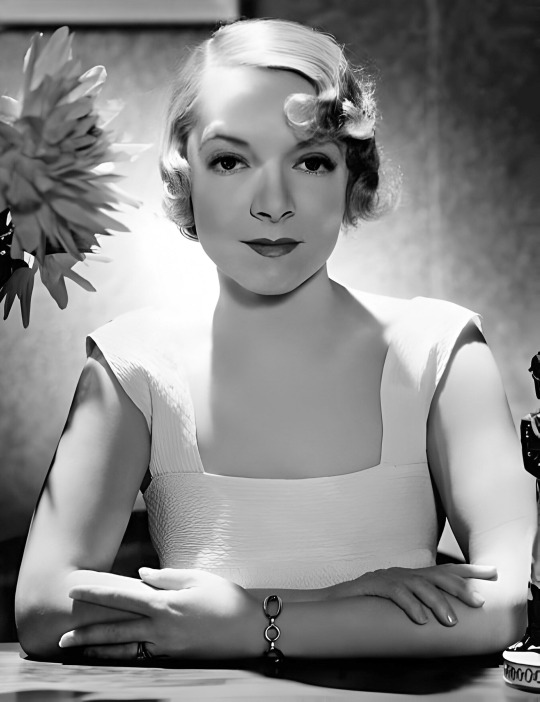



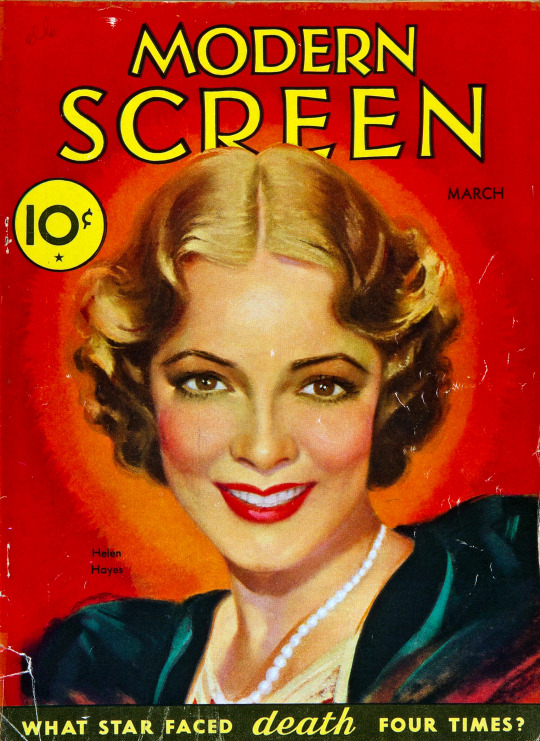
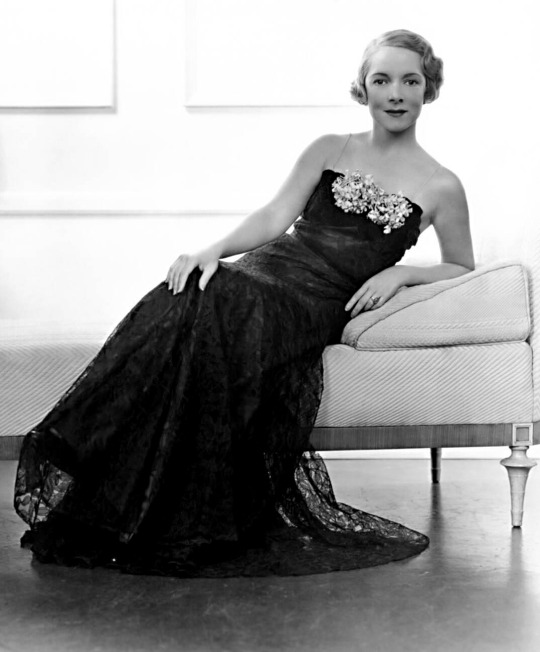

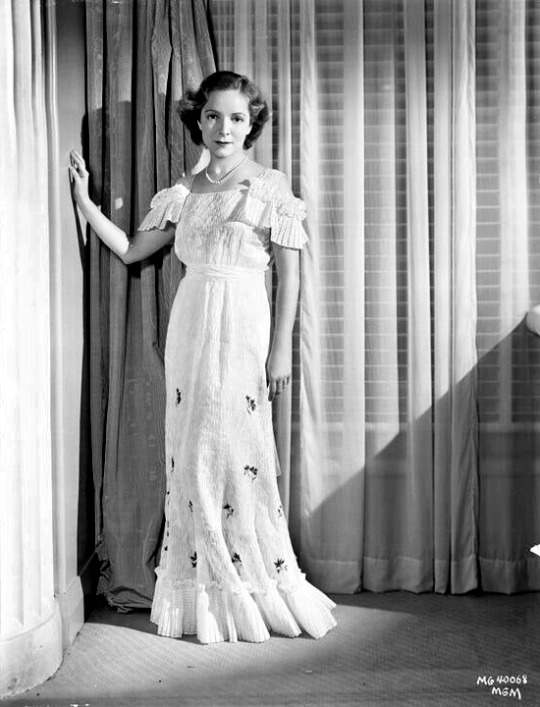




Helen Hayes MacArthur (born in Washington, D.C. on October 10, 1900 – March 17, 1993) was an American actress of Irish, Dutch, and English descent whose career spanned eighty-two years and regarded as the "First Lady of American Theatre."
Hayes made her stage debut at the age of five with her mother's encouragement. At age nine, she made her Broadway debut, and a year later, she was cast in the one-reel Vitagraph film.
She moved to Hollywood in 1931 when her husband became a screenwriter for Metro-Goldwyn-Mayer, where she also became a contract player. She made her film debut in The Sin of Madelon Claudet (1932), for which she received an Academy Award. Although she made a number of later films, within four years she returned to Broadway for the greatest success of her career: Gilbert Miller's production of Victoria Regina.
Hayes would return intermittently to Hollywood with featured roles in films, television, and radio, including a film comeback in disaster film Airport (1970), earning her a second Oscar. She retired in 1985 and spent her remaining years in her longtime home of Pretty Penny, in Nyack, New York, where she died of congestive heart failure at 92.
Legacy:
Was the first woman and second person to have won an Emmy, a Grammy, an Oscar, and a Tony Award (an EGOT).
Was also the first person to win the Triple Crown of Acting - the highest awards recognized in American film, television, and theater
Won two Academy Awards: Best Actress for The Sin of Madelon Claudet (1931) and Best Supporting Actress for Airport (1970)
Won one Primetime Emmy Award for Best Actress in 1953 and nominated for for nine more
Has three Tony Awards: two for Best Actress in a Play for Happy Birthday (1947) and Time Remembered (1958); and the Lawrence Langer Award for Distinguished Lifetime Achievement in the American Theatre
Won the Grammy Awards for Best Spoken Word Album for Great American Documents (1977)
Won the Distinguished Performance Award from the Drama League of New York Awards in 1936
Received the Presidential Medal of Freedom from President Ronald Reagan in 1986
Selected as one of 10 artists to be commemorated with the American Arts Commemorative Series gold medallions issued by the Treasury Department in 1980
Awarded the National Medal of Arts in 1988
Is one of the original inductees in the American Theatre Hall of Fame in 1972
Received the Golden Plate Award of the American Academy of Achievement in 1972
Inducted into the National Women's Hall of Fame in 1973
Won the Award for Greatest Public Service Benefiting the Disadvantaged, given annually by Jefferson Awards, in 1983
Honored with a US postage stamp in 2011
Has a Broadway theatre named after her: the Helen Hayes Theatre on 44th Street
Is the namesake for the annual Helen Hayes Awards, which has recognized excellence in professional theatre in Washington, D.C. since 1984
Served for 49 years on the Board of Visitors for the Helen Hayes Hospital, a physical rehabilitation hospital
Is a founding member of the Board of Advisors of the Riverside Shakespeare Company of New York City in 1981
Co-founded the National Wildflower Research Center in 1982 with Lady Bird Johnson
Wrote three memoirs: A Gift of Joy, On Reflection: An Autobiography, and My Life in Three Acts
Has had two stars on the Hollywood Walk of Fame since 1960: for motion pictures at 6258 Hollywood Boulevard, and for radio at 6549 Hollywood Boulevard

#Helen Hayes#First Lady of American Theater#The Sin of Madelon Claudet#Airport#Victoria Regina#Silent Films#Silent Movies#Silent Era#Silent Film Stars#Golden Age of Hollywood#Classic Hollywood#Film Classics#Classic Films#Old Hollywood#Vintage Hollywood#Hollywood#Movie Star#Hollywood Walk of Fame#Walk of Fame#Movie Legends#Actress#hollywood actresses#hollywood icons#hollywood legend#movie stars#1900s#Broadway
3 notes
·
View notes
Text
3 notes
·
View notes
Text
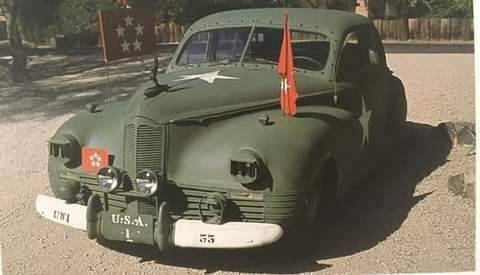
In 1942 General Douglas MacArthur ordered this Packard Clipper Eight sedan with virtually every option including air conditioning, overdrive, and radio.
The $1,341 base price nearly doubled to $2,600. The factory returned his check and delivered the car to his station in Australia as a gift.
The car was MacArthur's until 1948, when he gave it to his driver who had served the general.
The car sat forgotten in a barn in Texas for 30 years. MacArthur made arrangements through a Navy friend to ship the car on the aircraft carrier Princeton to San Diego.
Then on a military flatbed it shipped to Fort Sam Houston, Texas. It was released to the driver in his home city of Dallas. He made arrangements to have military hardware removed and painted a bright post war color. However, he had to wait as they were busy.
Before he could get it done he parked the car in his small, dirt floor garage. He died in his sleep and it remained there untouched for years. The car still had MacArthur's old army helmet and Corncob pipe in the back seat It may be in Golden, Colorado now
#Douglas Macarthur#american history#American auto#Packard#world history#WWII#world war ii#world war 2#flag officer#military#u.s. army#u.s. navy#corncob pipe#true grit
7 notes
·
View notes
Text
Listen to my Team of Bible Teachers Daily and you will Become an "Expert Christian"
4 notes
·
View notes
Text
S2E3 - MULTIMEDIA IN FANFICTION [PART 2] (OR, SNACKLEHOLT BINGSLEY LARPS WARRIOR CATS ON THE AMAZON KINDLE)
Here is our latest episode 🎉
In this episode, Lani (@copper-dust) interviews author and multimedia artist @rosalui. They talk about Rosa’s work in a huge number of fandoms featuring anything from fake newspaper articles to academic pastiches. Rosa talks about the appeal of non-conventional storytelling and the draw of writing pieces because you can’t find them anywhere else. This is a short episode, but a very sweet one, which we hope you enjoy!
This week, we mention:
Fandoms: Naruto, Mo Dao Zu Shi, Harry Potter, Avengers, Captain America
The Daily Show with Jon Stewart
Wattleford, Bumbleby. 'Potterwatch: Underground Radio and the Voice of a Revolution.' Hogsmeade: Widdershins, 2006. by RosaLui
The Year of Secret Assignments by Jaclyn Moriarty
MediAvengers by nottonyharrison
Steve Rogers Might Wear Tights, But He’s Not Your Pin-up Girl by RosaLui and whatalchemy
tin soldiers by idrilka
Bird Lovers, Backyard by Thalia Field
Macarthur Park by Richard Harris
Warrior Cats by Erin Hunter
Check The Spindle by @copper-dust
Your recommendations for this week are:
No recommendations this week but Jo would like to push The Every again, which she just finished and insists is incredible.
You can find us online at:
The Fanfic Writer’s Craft: tumblr ; spotify
Rosalui (@rosalui): tumblr; AO3; livejournal
Lani (@copper-dust): tumblr ; AO3
Jo (@pebblysand): tumblr ; AO3
#fandom#fanfiction#fiction#fanfic#writing advice#creative writing#writing#fanfiction podcast#fanfics#multimedia#the avengers#marvel#harry potter#Spotify
12 notes
·
View notes